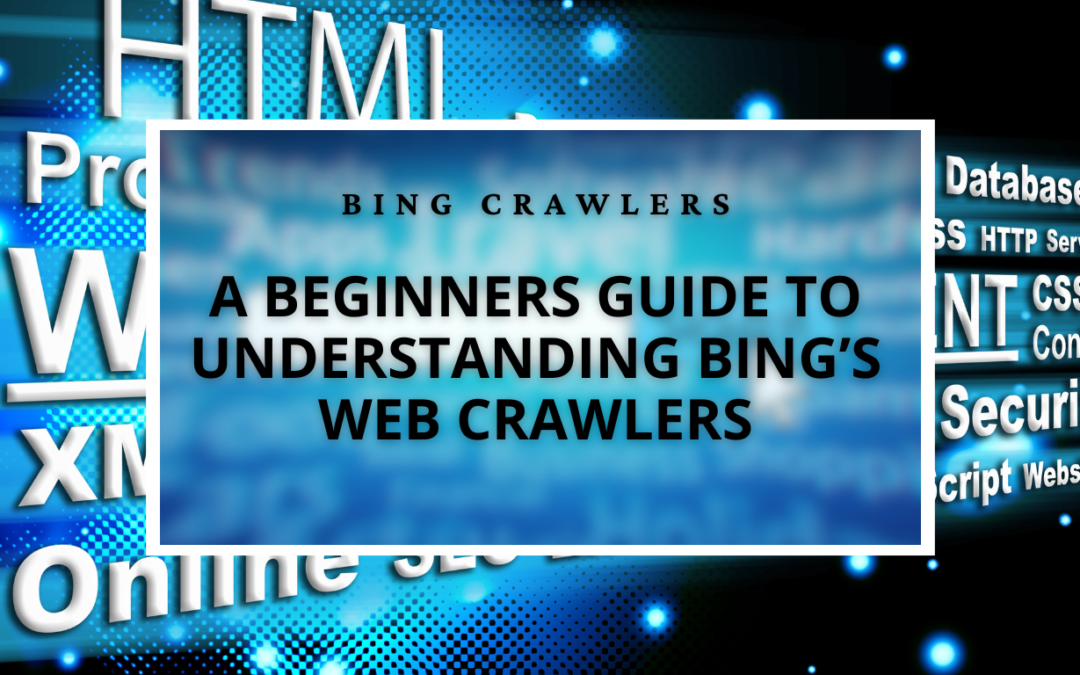Bing Crawlers: A Beginner’s Guide
In the extensive world of the internet, search engines play a vital role in helping users discover relevant information. Bing, Microsoft’s search engine, employs sophisticated algorithms and tools to index web pages and deliver accurate search results to its users. At the heart of this process are Bing crawlers, the unsung heroes that navigate the web to gather data. In this Crackerjack Strategies blog article, we’ll dive into the basics of Bing crawlers to shed light on their role and functionality.
What are Bing Crawlers?
Bing crawlers, also known as web crawlers, spiders, or bots, are automated programs designed to systematically browse the internet and collect information from web pages. A web crawlers primary function is to index web content. This process involves visiting websites, reading their content, and storing relevant data in a searchable index. This index serves as the foundation for Bing’s search results, enabling users to find the most relevant and up-to-date information.
How Do Bing Crawlers Work?
Bing crawlers operate based on a set of instructions provided by Bing’s search engine algorithms. These algorithms determine which websites to crawl and how frequently to revisit them while determining what information to extract. When a user enters a search query, Bing’s algorithms analyze the indexed data to generate a list of relevant web pages, which are ranked according to their perceived relevance and quality to the search.
Crawlers start by fetching a few web pages and then follow the links on those pages to discover new content. They employ various techniques to navigate the web efficiently, such as prioritizing frequently updated pages, respecting robots.txt directives that specify which areas of a site should not be crawled, and recognizing sitemaps that provide a roadmap of a website’s structure.
Types of Bing Crawlers
Bing employs several types of crawlers. These crawlers are responsible for indexing HTML web pages. They parse the content of web pages, including text, images, and metadata to understand their relevance to specific search. While they each fulfill different purposes and accommodate various types of web content, they each have both desktop and mobile variants:
Bing Bot
Is the standard crawler and handles the majority of the daily crawling needs. It also uses multiple types of agent strings.
Adidx Bot
This is the crawler used by Bing Ads. It crawls ads and follows the website associated with those ads for quality control.
Bing Preview
The purpose of the Bing Preview bot is generating page snapshots of websites. These snapshots help improve the search experience by providing a visual preview of the web page.
Microsoft Preview
The Microsoft Preview bot is a web crawler that generates page snapshots for Microsoft products. It has both “desktop” and “mobile” variants.
The Importance of Bing Crawlers
Bing crawlers play a crucial role in maintaining the relevance and accuracy of Bing’s search results. By continuously crawling and indexing web content, they ensure that users can discover a wide range of information across various domains and topics. Additionally, Bing crawlers contribute to the visibility of websites by indexing their content while making them accessible to users searching for relevant information.
Crackerjack Strategies Closing Thoughts
In the digital ecosystem of today, Bing crawlers serve as the backbone of Bing’s search engine, enabling users to explore the vast expanse of the internet with ease. By understanding the basics of Bing and Google crawlers and their role in indexing web content, small business owners can gain insight into how search engines operate and deliver relevant search results. As the internet continues to evolve, Bing crawlers will remain instrumental in helping users navigate and discover valuable information online, and should be considered in any SEO plan and SEO strategy.

